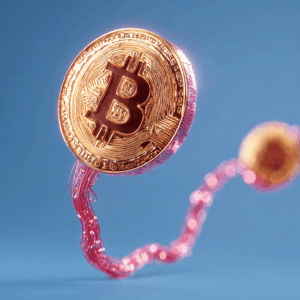
The U.S. Bureau of Labor Statistics recently released the Consumer Price Index for All Urban Consumers (CPI-U) report for October. The report revealed that the CPI-U remained unchanged in October, following a 0.4% increase in September. However, over the past year, the all-items index rose by 3.2% before seasonal adjustment, indicating a significant trend in consumer pricing.
Steady CPI in October Balances Shelter Rise Against Gasoline Drop
The October CPI report highlighted an interesting dynamic in the market. While there was a continuous rise in the shelter index, there was also a significant 5% drop in the gasoline index. This juxtaposition resulted in an overall unchanged seasonally adjusted index for the month. Additionally, the broader energy index decreased by 2.5%, further contributing to the stabilization of consumer prices.
Food Prices Show Modest Increase
The U.S. Labor Department noted that the food index saw a modest increase of 0.3% in October, continuing its upward trend from a 0.2% rise in September. The cost of food at home mirrored this increase, while expenses for food consumed away from home rose slightly higher, at 0.4%.
Deceleration in 12-Month Period
Looking at the 12-month period ending in October, the all-items index showed a 3.2% rise, which represents a deceleration from the 3.7% increase seen in the previous year's period. Over the past year, the energy index decreased by 4.5%, contrasting with the food index's 3.3% increase.
Mixed Market Reactions
Following the release of the report, the U.S. stock market displayed varied responses. The Dow Jones Industrial Average and the Russell 2000 Index both noted upward movements. In the cryptocurrency market, sentiments were also mixed. The overall crypto market value dipped by 0.84% in the last 24 hours, while gold prices increased by 0.6% and silver surged by over 2% in the precious metals market.
Investors remain uncertain about the next steps of the U.S. Federal Reserve. The yield on the 10-year U.S. Treasury note currently stands at a reduced rate of 4.457%. Speculation about the Fed's future actions has contributed to this uncertainty. Despite the deceleration in the CPI, experts believe the Fed will continue to speak hawkishly and emphasize their commitment to achieving the long-run 2% inflation target.
What are your thoughts on Tuesday's CPI release? Share your opinions in the comments section below.
Frequently Asked Questions
How much money should I put into my Roth IRA?
Roth IRAs are retirement accounts where you deposit your own money tax-free. These accounts are not allowed to be withdrawn before the age of 59 1/2. There are some rules that you need to keep in mind if you want to withdraw funds from these accounts before you reach 59 1/2. First, your principal (the deposit amount originally made) is not transferable. This means that you can't take out more money than you originally contributed. If you take out more than the initial contribution, you must pay tax.
The second rule says that you cannot withdraw your earnings without paying income tax. Withdrawing your earnings will result in you paying taxes. Let's take, for example, $5,000 in annual Roth IRA contributions. In addition, let's assume you earn $10,000 per year after contributing. Federal income taxes would apply to the earnings. You would be responsible for $3500 You would have $6,500 less. You can only take out what you originally contributed.
You would still owe tax on $1,500 if you took out $4,000 of your earnings. Additionally, half of your earnings would be lost because they will be taxed at 50% (half the 40%). You only got back $4,000. Even though you were able to withdraw $7,000 from your Roth IRA,
There are two types if Roth IRAs, Roth and Traditional. A traditional IRA allows for you to deduct pretax contributions of your taxable income. Your traditional IRA can be used to withdraw your balance and interest when you are retired. You have the option to withdraw any amount from a traditional IRA.
Roth IRAs do not allow you to deduct your contributions. However, once you retire, you can withdraw your entire contribution plus accrued interest. There is no minimum withdrawal limit, unlike traditional IRAs. Your contribution can be withdrawn at any age, not just when you reach 70 1/2.
Can I keep physical gold in an IRA?
Not just paper money or coins, gold is money. It is an asset that people have used over thousands of years as money, and a way to protect wealth from inflation and economic uncertainties. Investors use gold today as part of their diversified portfolio, because it tends to perform better in times of financial turmoil.
Today, many Americans invest in precious metals such as gold and silver rather than stocks and bonds. It is possible to make money by investing in gold. However, it doesn't guarantee that you'll make a lot of money.
One reason is that gold historically performs better than other assets during financial panics. Between August 2011 to early 2013, gold prices rose close to 100 percent while the S&P 500 fell 21 per cent. During turbulent market conditions gold was one of few assets that outperformed stock prices.
Another advantage of investing in gold is that it's one of the few assets with virtually zero counterparty risk. Your shares will still be yours even if your stock portfolio drops. But if you own gold, its value will increase even if the company you invested in defaults on its debt.
Finally, gold is liquid. This means that you can sell gold anytime, regardless of whether or not another buyer is available. Because gold is so liquid compared to other investments, buying it in small amounts makes sense. This allows one to take advantage short-term fluctuations within the gold price.
How to Open a Precious Metal IRA?
The first step in opening an Individual Retirement Account, (IRA), is to decide if it's something you want. To open the account, complete Form 8606. Then you must fill out Form 5204 to determine what type of IRA you are eligible for. This form should be completed within 60 days after opening the account. After this, you are ready to start investing. You could also opt to make a contribution directly from your paycheck by using payroll deduction.
To get a Roth IRA, complete Form 8903. Otherwise, the process will be identical to an ordinary IRA.
To be eligible to have a precious metals IRA you must meet certain criteria. The IRS states that you must be at least 18 and have earned income. For any tax year, your earnings must not exceed $110,000 ($220,000 for married filing jointly). Contributions must be made on a regular basis. These rules will apply regardless of whether your contributions are made through an employer or directly out of your paychecks.
An IRA for precious metals allows you to invest in gold and silver as well as platinum, rhodium, and even platinum. However, you won't be able purchase physical bullion. This means you won’t be able to trade stocks and bonds.
You can also use your precious metals IRA to invest directly in companies that deal in precious metals. This option may be offered by some IRA providers.
However, investing in precious metals via an IRA has two serious drawbacks. First, they don't have the same liquidity as stocks or bonds. It's also more difficult to sell them when they are needed. Second, they don’t produce dividends like stocks or bonds. Also, they don't generate dividends like stocks and bonds. You will eventually lose money rather than make it.
Statistics
- You can only purchase gold bars at least 99.5% purity. (forbes.com)
- (Basically, if your GDP grows by 2%, you need miners to dig 2% more gold out of the ground every year to keep prices steady.) (smartasset.com)
- Contribution limits$6,000 (49 and under) $7,000 (50 and up)$6,000 (49 and under) $7,000 (50 and up)$58,000 or 25% of your annual compensation (whichever is smaller) (lendedu.com)
- Indeed, several financial advisers interviewed for this article suggest you invest 5 to 15 percent of your portfolio in gold, just in case. (aarp.org)
- This is a 15% margin that has shown no stable direction of growth but fluctuates seemingly at random. (smartasset.com)
External Links
irs.gov
investopedia.com
- Are You a Good Candidate for a Gold IRA
- What are the Options Types, Spreads, Example, and Risk Metrics
law.cornell.edu
- 7 U.S. Code SS 7 – Designation of boards of trade as contract markets
- 26 U.S. Code SS 408 – Individual retirement accounts
wsj.com
- Saddam Hussein's InvasionHelped Uncage a Bear In 1991 – WSJ
- You want to keep gold in your IRA at home? It's not legal – WSJ
How To
A rising trend in gold IRAs
As investors seek to diversify their portfolios while protecting themselves from inflation, the trend towards gold IRAs is on the rise.
Owners of the gold IRA can use it to invest in physical bars and bullion gold. It can be used as a tax-free way to grow and it is an alternative investment option for people who are not comfortable with stocks or bonds.
An investor can use a gold IRA to manage their assets and not worry about market volatility. Investors can use the gold IRA for protection against inflation and potential problems.
Investors also enjoy the benefits of owning physical gold, which includes its unique properties such as durability, portability, and divisibility.
A gold IRA provides many additional benefits. One is the ability for heirs to quickly transfer ownership of gold. Another is the fact that gold is not considered a currency or a commodities by the IRS.
This is why the gold IRA has become increasingly popular with investors looking to provide financial security during times of financial uncertainty.
—————————————————————————————————————————————————————————————-
By: Jamie Redman
Title: October’s Inflation Report: Shelter Prices Up, Gasoline Plummets — Mixed Market Reactions Follow
Sourced From: news.bitcoin.com/octobers-inflation-report-shelter-prices-up-gasoline-plummets-mixed-market-reactions-follow/
Published Date: Tue, 14 Nov 2023 16:30:17 +0000













